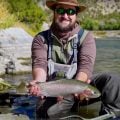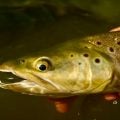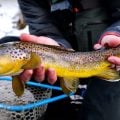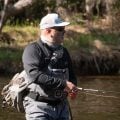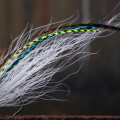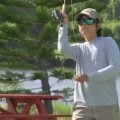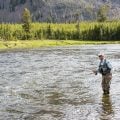Ask MidCurrent: What’s the Best PFD for Fly Fishers?
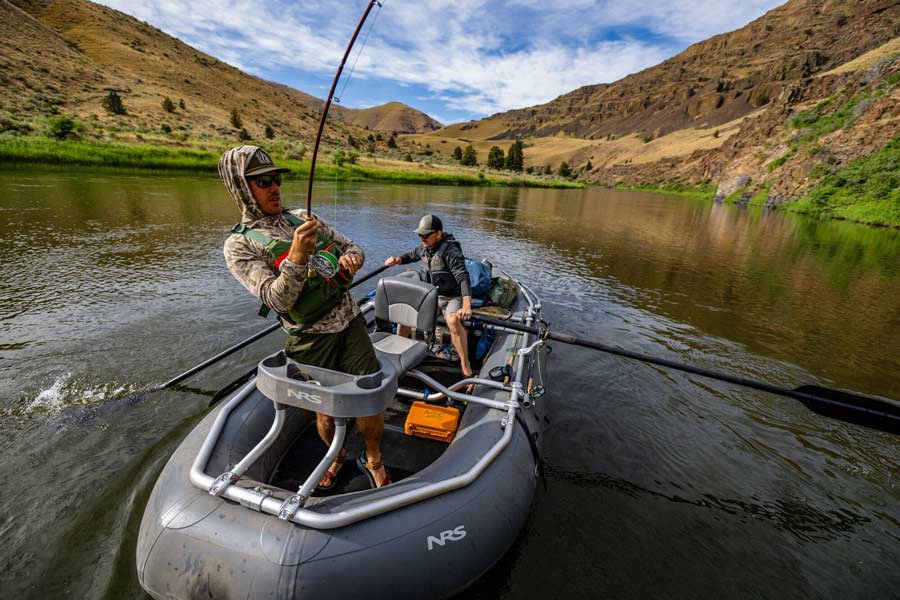
A good fishing PFD must be comfortable, or you will be less likely to wear it. And if you don’t wear it, it can’t save your life. All photos: Anglers All
Question: What is the best PFD that doesn’t get in the way until you need it? I use a chest pack and so far, I have not been able to find one that doesn’t become unwieldy.
—Bill McDonough, via email
Answer: Anglers know the value of preparation: Good drifts don’t just happen, and neither does safety. Bill’s question caused us to dig into one of the more overlooked pieces of gear in a fishing setup, the personal flotation device (PFD). What should anglers prioritize? How do you find the best balance between safety, comfort, and fishing functionality?
We reached out to Johnnie Trujillo, manager of the Boathouse at Anglers All in Littleton, Colorado. Johnnie spends his days outfitting paddlers and anglers alike, and his perspective on fishing-specific PFDs is rooted in real-world experience. Here’s what he had to say.
What are the most important features anglers should prioritize when choosing a PFD for fly fishing?
Johnnie Trujillo: Safety is number one, but comfort is right there with it. If you’re comfortable, you’ll wear it. That’s the bottom line.
How do fishing-specific PFDs differ from general paddling or recreational models?
JT: They’re basically the same when it comes to core safety, but fishing-specific PFDs are designed with utility in mind. You’ll see built-in pockets, tool attachment points, and spots to stash forceps or pliers, which are features you won’t find on a basic recreational vest.
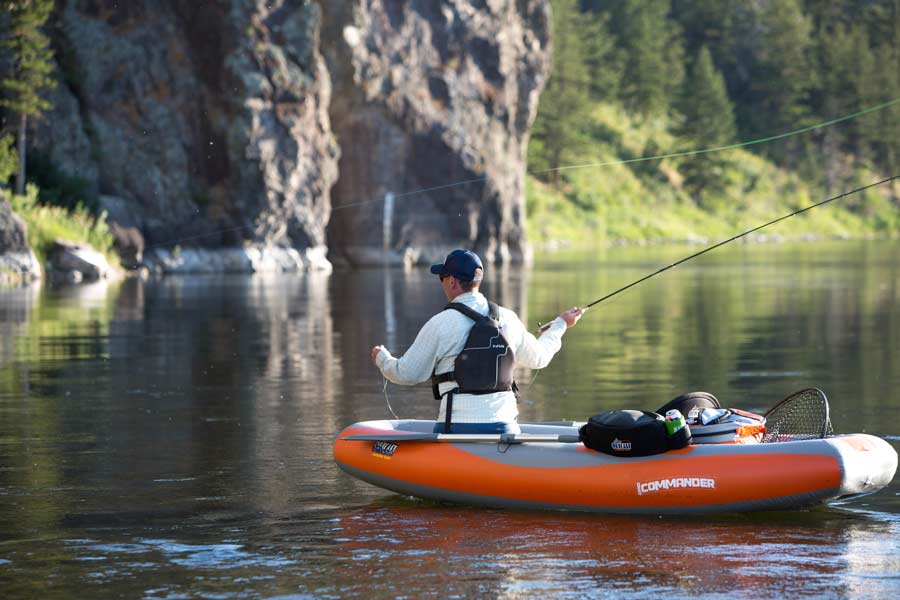
Freedom of movement is vital for anglers, who need to be able cast, row, and have access to their gear.
How does your watercraft or fishing environment influence which PFD is best?
JT: If you’re in moving water—say, a raft or drift boat—you likely have a boat bag or dry box for gear, so you don’t need a vest loaded with pockets. But on SUPs or float tubes, having easy-access storage built into your PFD can make the day way smoother.
How important is fit and adjustability, especially for all-day comfort?
JT: Comfort is key if you want to keep your vest on all day. I prefer a narrow yoke or collar, as it keeps your arms free for casting or rowing. I personally love the NRS Ninja for that exact reason. Also, make sure your PFD has solid adjustability, especially if you’re layering up in colder weather.
What common mistakes do anglers make when choosing a PFD?
JT: Color and fit. A lot of anglers want low-profile, muted colors, but if you end up swimming, bright colors make you easier to spot. Fit-wise, many guys think they need an XL, but most men fit better in a M/L. A PFD that’s too big won’t keep you safe.
What’s the difference between foam, inflatable, and hybrid PFDs—and which is best for fly anglers?
JT: Traditional PFDs are made from foam or kapok, a naturally buoyant material. These are best for both rivers and still water. Inflatables and hybrids have a place—mostly in still water—but I don’t recommend them for rivers. When in doubt, go with foam.
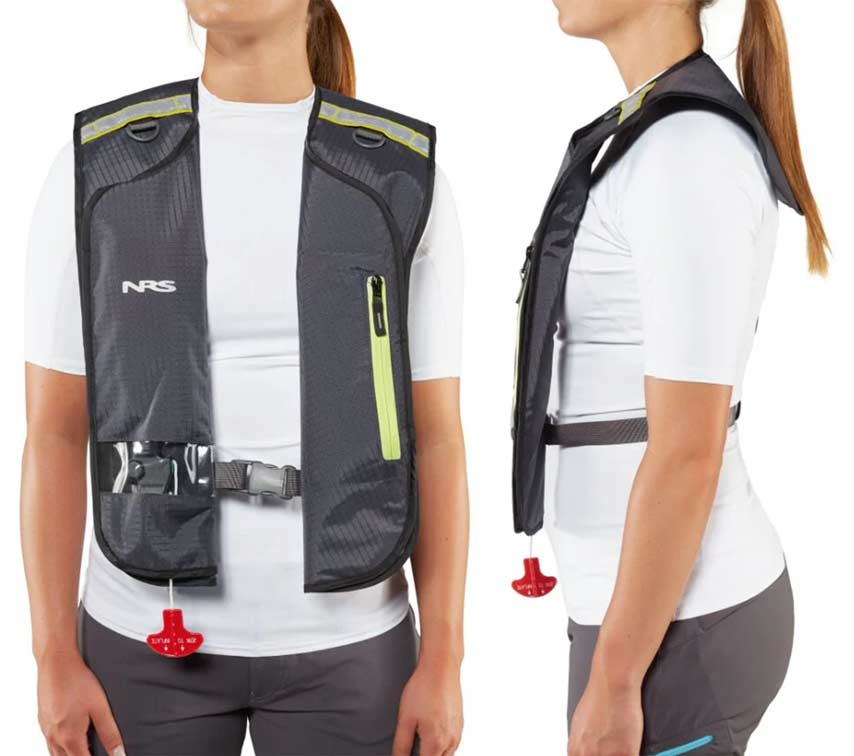
Inflatable PFDs are convenient, but they require maintenance and the ability of the wearer to pull the tab to inflate.
Why don’t you recommend inflatable PFDs for most anglers?
JT: I’m personally not a fan, and the only application where I’d wear one is on still water. We do sell them, but really only to float-tubers and SUP riders. If you were to fall and hit your head, you may be unable to inflate the PFD. Also, you have to carry recharge kits to re-arm it. I think they’re more of a hassle. True PFDs are much more comfortable than they used to be. You have a higher chance of falling and getting hurt on rivers, and the water’s usually much colder, which could impact mobility or PFD performance.
That said, inflatables aren’t all bad. They’re super light and stay out of your way, which some folks really like, especially on hot days. But you’ve got to stay on top of maintenance, and they’re not going to do you much good if you’re unconscious or forget to re-arm them. I’d only go that route if you’re confident in calm conditions and know how your PFD works. One model that people seem to like is the NRS Matik. It’s clean and comfortable, and fine for mellow water if that’s your preference.
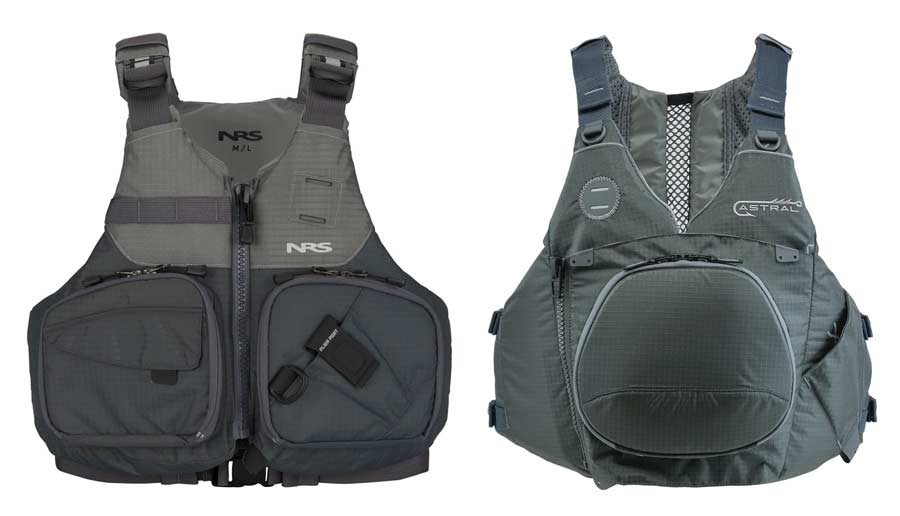
The NRS Zander (left) and the Astral Sturgeon offer storage and attachment points for anglers.
Any specific models you recommend that offer good storage for flies, tippet, or tools?
JT: Two of our top sellers are the NRS Zander and the Astral Sturgeon. Both offer great storage options and are purpose-built for fishing.
What’s the go-to PFD at Anglers All these days?
JT: We all love the NRS Ninja. Most of us are rowing or standing, and the Ninja is perfect for both. It’s not marketed as a true “fishing” PFD, but it still has decent storage and incredible comfort.
For anglers who mostly wade but occasionally float, is there a good budget-friendly option?
JT: Absolutely. The NRS Vapor is a great minimalist pick at $99.99. It has no pockets, but it’s super comfortable and safe. If you want a little more storage without going full-featured, check out the NRS Wrangler at $134.99.

The NRS Vapor (left) and NRS Vapor won’t break the bank, but they’ll keep you afloat when you need it.
There’s no one-size-fits-all PFD for fly anglers, but with the right balance of comfort, fit, and function, there’s no excuse to leave safety behind. Whether you’re paddling a SUP, or manning the oars of a drift boat, there’s a model built for your day on the water.
Still unsure? Head to your local shop and try one on, or better yet, talk to someone like Johnnie. A few minutes of fit and feedback can go a long way toward staying safe and fishing longer.
Got a question for our experts? Click here!
